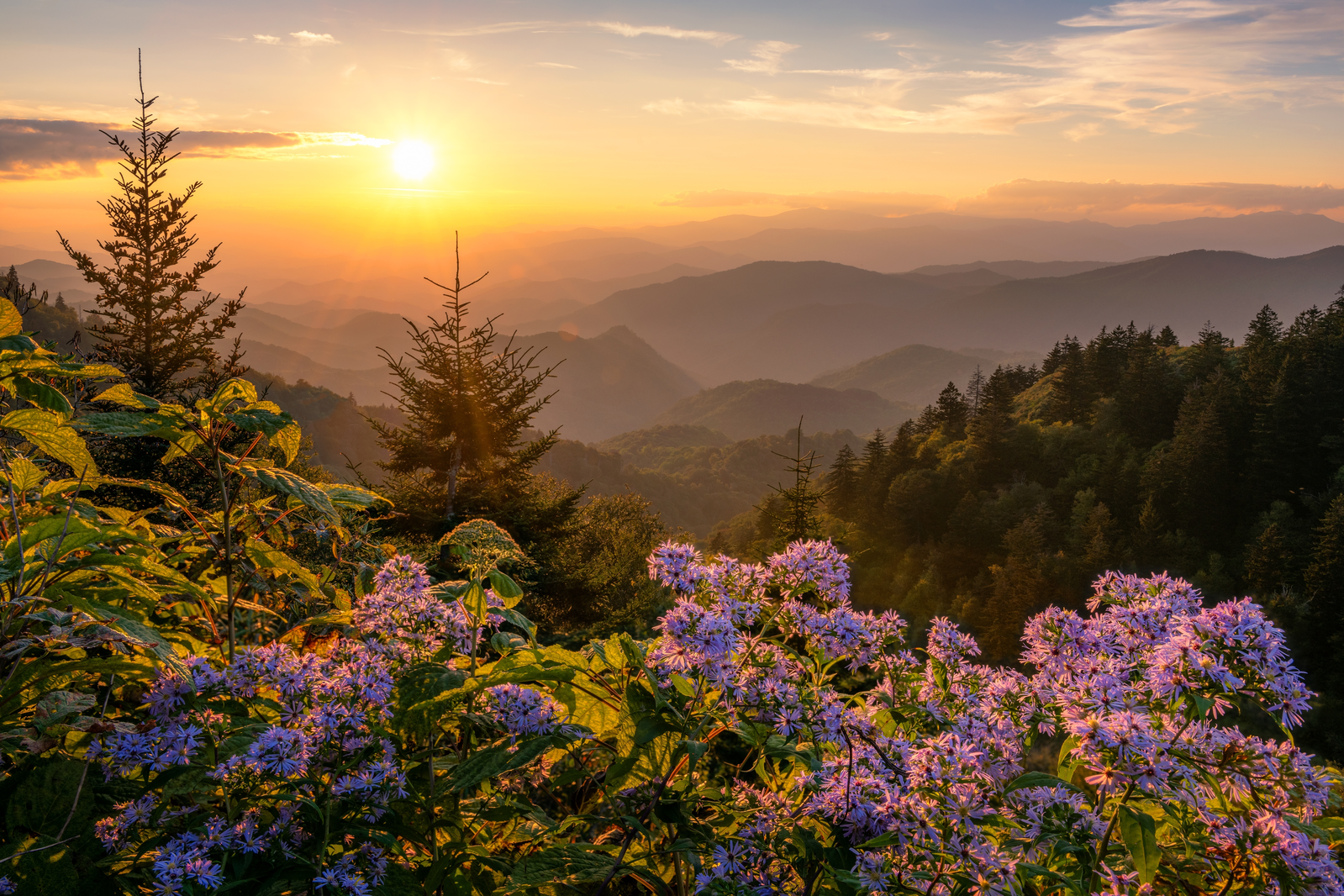Anyone who has visited the Great Smoky Mountains can confirm that the Smokies certainly live up to their name! The mountains of East Tennessee and Western North Carolina are blanketed with a smoky haze that gives the region an almost magical quality. Indeed, the Cherokee considered the mountains to be a sacred place and referred to the area as “Shaconage” (Sha-Kon-O-Hey): land of the blue smoke. When European settlers arrived in the early 1800s, they took inspiration from the Cherokee language when they named the Great Smoky Mountains and the nearby Blue Ridge Mountains.
Have you ever wondered what makes the Smoky Mountains smoky? We did some research to bring you the answer.

Where Does the Smoke Come From?
The short answer to the question is that the “smoke” from the Smoky Mountains is actually fog that comes from the area’s vegetation. We all know that plants take in carbon dioxide and give off oxygen. What we hear less about is how plants also exhale something called “volatile organic compounds,” or VOCs.
VOCs may sound scary, but when they are released from plants, they are completely natural. Have you ever enjoyed the piney smell that wafts from a Christmas tree? That scent comes from the tree giving off VOCs as it breathes.
In addition to causing various scents and odors, a high concentration of VOCs can also cause fog. VOCs are chemicals that have a high vapor pressure, which means that they can easily form vapors at room temperature. The millions of trees, bushes, and other plants in the Great Smoky Mountains all give off vapor, which comes together to create the fog that gives the mountains their signature smoky look.
(See Also: 7 Basic Facts About the Smoky Mountains That Might Surprise You)

What Makes It Blue?
While VOCs help explain what makes the Smoky Mountains smoky, they are also responsible for the fog’s blue appearance. When vapor is released from the area’s vegetation, the molecules that make up the gas scatter blue light from the sky. It is this phenomenon that creates what the Cherokee called “blue smoke.”
The same blueish tint that you find in the Smokies can be seen elsewhere in the country. Any forest with a great deal of pine trees, such as Acadia National Park in Maine, will also have a blue haze.
The Great Smoky Mountains are particularly blue and smoky because they have the perfect natural conditions for it. The trees that are most common in the region have high concentrations of VOCs that scatter blue light. Also, the Smokies get a lot of rainfall and sunlight, experience high levels of humidity, and have a lot of stagnant air. When you take all of these factors into account, you’ve got a recipe for some of the most beautiful mountains in the world!
What About Air Pollution?

Scientists estimate that about 80% of the fog in the Great Smoky Mountains comes from the natural sources described above. Unfortunately, air pollution is also part of what makes the Smoky Mountains smoky.
When coal is burned in the region, it releases sulfate particles into the air. Unlike the natural VOCs which give off a harmless blueish tint, sulfate particles block sunlight from getting through. On humid days, the sulfate particles grow larger and create a white haze that can ruin some of the best views in the national park.
Fortunately, the National Park Service has made important gains in improving air quality in the Smokies. A recent study found that pollution is the lowest it has been in years, with haziness down by 50% and emissions from the Tennessee Valley Authority down by over 90%. The EPA has set a goal for a return to natural haze conditions in all of the country’s national parks by the year 2064, and we are confident that the Smokies will hit that deadline!
More About the Smoky Mountains
Now you know what makes the Smoky Mountains smoky! It’s no secret that the Smokies offer incredible views for everyone to enjoy. Want to know something that’s not as well known? Take a look at these 5 surprising facts about the Great Smoky Mountains National Park!
















